
Home - Search - Browse - Alphabetic Index: 0- 1- 2- 3- 4- 5- 6- 7- 8- 9
A- B- C- D- E- F- G- H- I- J- K- L- M- N- O- P- Q- R- S- T- U- V- W- X- Y- Z
Challenger
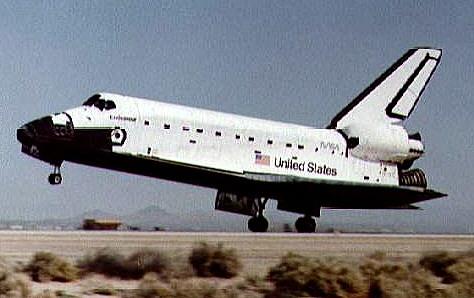
Shuttle Landing
Credit: NASA
AKA: OV-099. Status: Operational 1983. First Launch: 1983-04-04. Last Launch: 1986-01-28. Number: 10 . Payload: 24,990 kg (55,090 lb). Thrust: 53.37 kN (11,997 lbf). Gross mass: 116,670 kg (257,210 lb). Unfuelled mass: 104,258 kg (229,849 lb). Specific impulse: 316 s. Height: 37.24 m (122.17 ft). Span: 23.79 m (78.05 ft).
Challenger, the second space shuttle orbiter to become operational at Kennedy Space Center, was named after an American Naval research vessel that sailed the Atlantic and Pacific oceans during the 1870's. The Apollo 17 lunar module also carried the name of Challenger. The Challenger flew nine missions before it was destroyed together with its crew in the explosion of mission STS-51-L on 28 January 1986.
Challenger joined NASA fleet of reusable winged spaceships in July 1982. It flew nine successful Space Shuttle missions. On January 28, 1986, the Challenger and its seven-member crew were lost 73 seconds after launch when a booster failure resulted in the breakup of the vehicle.
Challenger started out as a high-fidelity structural test article (STA-099). The airframe was completed by Rockwell and delivered to Lockheed Plant 42 for structural testing on 02/04/78. The orbiter structure had evolved under such weight-saving pressure that virtually all components of the air frame were required to handle significant structural stress. With such an optimized design, it was difficult to accurately predict mechanical and thermal loading with the computer software available at the time. The only safe approach was to submit the structural test article to intensive testing and analysis. STA-099 underwent 11 months of intensive vibration testing in a 43 ton steel rig built especially for the Space Shuttle Test Program. The rig consisted of 256 hydraulic jacks, distributed over 836 load application points. Under computer control, it was possible to simulate the expected stress levels of launch, ascent, on-orbit, reentry and landing. Three 1 million pound-force hydraulic cylinders were used to simulate the thrust from the Space Shuttle Main Engines. Heating and thermal simulations were also done.
Rockwell's original $2.6 billion contract had authorized the building of a pair of static-test articles (MPTA-098 and STS-099) and two initial flight-test vehicles (OV-101 and OV-102). A decision in 1978 not to modify Enterprise from her ALT configuration would have left Columbia as the only operational orbiter vehicle. Therefore on 1/29/79 NASA awarded Rockwell a supplemental contract to convert Challenger (STA-099) from a test vehicle into a space-rated Orbiter (OV-099).
STA-099 was returned to Rockwell on 11/7/79 and it's conversion into a fully rated Orbiter Vehicle was started. This conversion, while easier than it would have been to convert Enterprise, still involved a major disassembly of the vehicle. Challenger had been built with a simulated crew module and the forward fuselage halves had to be separated to gain access to the crew module. Additionally, the wings were modified and reinforced to incorporate the results of structural testing and two heads-up displays (HUD's) were installed in the cockpit. Empty Weight was 70,500 kg at rollout and 79,415 kg with main engines installed. This was 1310 kg lighter than Columbia
Upgrades and Features
Two orbiters, Challenger and Discovery, were modified at KSC to enable them to carry the Centaur upper stage in the payload bay. These modifications included extra plumbing to load and vent Centaur's cryogenic (Lox/LH2) propellants (other IUS/PAM upper stages used solid propellants). Controls were installed on the aft flight deck for loading and monitoring the Centaur stage. No Centaur flight was ever flown and after the loss of Challenger it was decided that the risk was too great to launch a shuttle with a fuelled Centaur upper stage in the payload bay.
Construction Milestones (MPTA-098)
07/26/72 Contract Award
06/24/75 Start structural assembly of aft-fuselage
07/12/76 Start of Final Assembly
05/27/77 Completed Final Assembly
04/21/78 Flight Readiness Firing
Construction Milestones (STA-099)
07/26/72 Contract Award
11/21/75 Start structural assembly of Crew Module
06/14/76 Start structural assembly of aft-fuselage
03/16/77 Wings arrive at Palmdale from Grumman
09/30/77 Start of Final Assembly
02/10/78 Completed Final Assembly
02/14/78 Rollout from Palmdale
Construction Milestones (OV-099)
01/05/79 Contract Award
01/28/79 Start structural assembly of Crew Module
06/14/76 Start structural assembly of aft-fuselage
03/16/77 Wings arrive at Palmdale from Grumman
11/03/80 Start of Final Assembly
10/23/81 Completed Final Assembly
06/30/82 Rollout from Palmdale
07/01/82 Overland transport from Palmdale to Edwards
07/05/82 Delivery to Kennedy Space Center
12/19/82 Flight Readiness Firing
04/04/83 First Flight (STS-6)
Crew Size: 8. Orbital Storage: 30 days. Habitable Volume: 71.50 m3. Structure: 30,050 kg (66,240 lb). Heat shield: 12,100 kg (26,600 lb). Reaction Control System: 2,800 kg (6,100 lb). Recovery Equipment: 4,200 kg (9,200 lb). Navigation Equipment: 2,000 kg (4,400 lb). Electrical Equipment: 7,000 kg (15,400 lb). Communications Systems: 700 kg (1,540 lb). Crew Seats and Provisions: 750 kg (1,650 lb). Miscellaneous Contingency: 2,400 kg (5,200 lb). Environmental Control System: 2,500 kg (5,500 lb). RCS Coarse No x Thrust: 38 x 387 N. RCS Fine No x Thrust: 6 x 107 N. RCS specific impulse: 289 sec. RCS total impulse: 9,355 kgf-sec. Spacecraft delta v: 700 m/s (2,290 ft/sec). Electric System: 3,100.00 kWh. Electric System: 14.00 average kW.
Family: Spaceplane, US Rocketplanes. Country: USA. Engines: OME. Flights: STS-6, STS-7, STS-8, STS-41-B, STS-41-C, STS-41-G, STS-51-B, STS-51-F, STS-61-A, STS-51-L. Launch Vehicles: Space Shuttle. Propellants: N2O4/MMH. Projects: STS. Launch Sites: Cape Canaveral, Cape Canaveral LC39A, Cape Canaveral LC39B. Agency: NASA, North American. Bibliography: 15, 2, 33, 44, 6, 66, 7, 8.
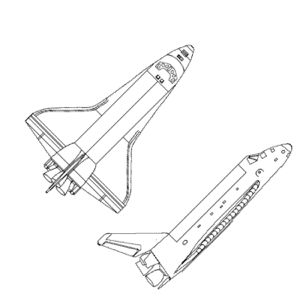 | Shuttle Orbiter Shuttle Orbiter 2 view Credit: © Mark Wade |
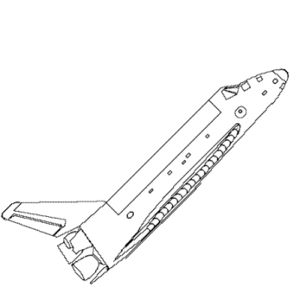 | Shuttle Orbiter Shuttle Orbiter side view Credit: © Mark Wade |
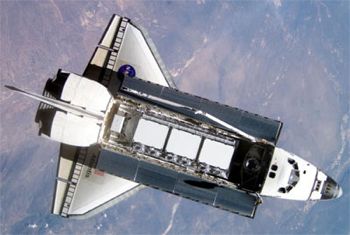 | STS-51-B Credit: Manufacturer Image |
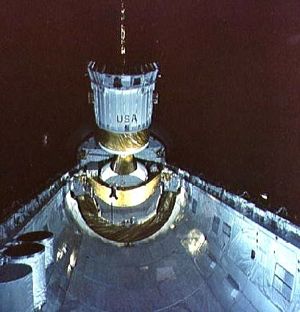 | STS-6 Deployment of the TDRS by STS-6 Challenger Credit: NASA |
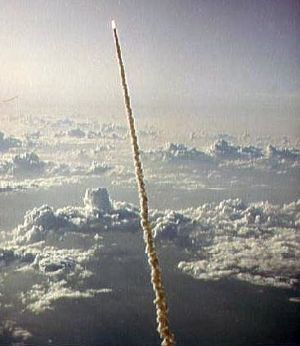 | STS-7 Air to air tracking views of the Challenger during launch of STS-7 mission Credit: NASA |
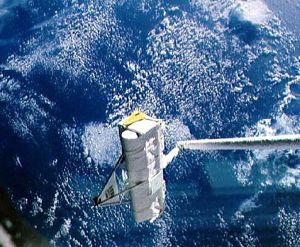 | STS-7 Challenger's RMS arm grasps SPAS-01 during proximity operations Credit: NASA |
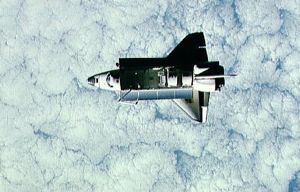 | STS-7 Full view of Challenger in space taken by the SPAS satellite Credit: NASA |
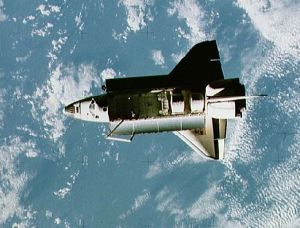 | STS-7 Full views of Challenger in space taken by the SPAS satellite Credit: NASA |
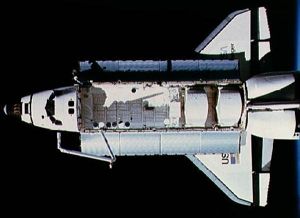 | STS-7 Full views of Challenger in space taken by the SPAS satellite Credit: NASA |
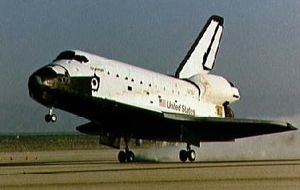 | STS-7 STS-7 Challenger landing at Edwards Air Force Base in southern California Credit: NASA |
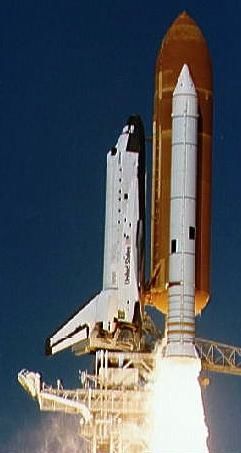 | STS-41-C Launch of the Shuttle Challenger during STS 41-C mission Credit: NASA |
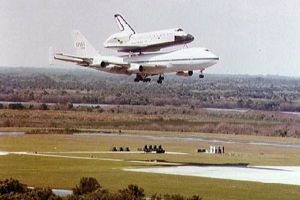 | STS-41-C Shuttle Challenger atop NASA 905 approaches KSC runway Credit: NASA |
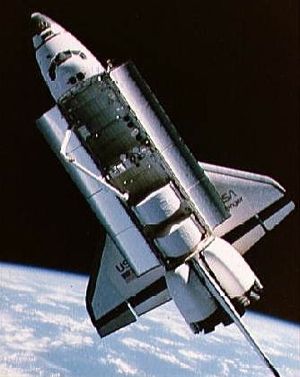 | STS-41-B View of the Challenger from the fixed camera in McCandless's helmet Credit: NASA |
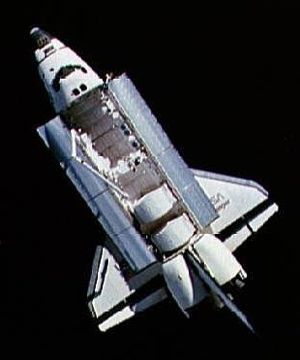 | STS-41-B View of the Challenger from the fixed camera in McCandless's helmet Credit: NASA |
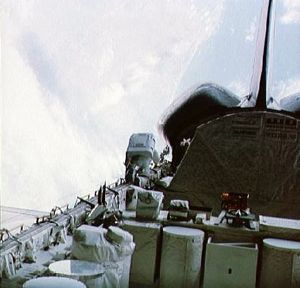 | STS-41-B View of retrieval of foot restraint which strayed from Challenger Credit: NASA |
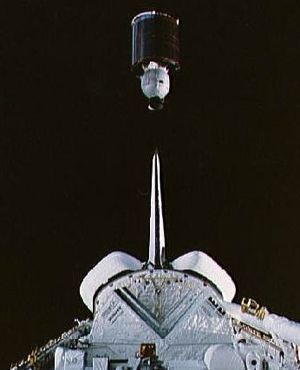 | STS-41-B View of the Palapa-B and the Shuttle Challenger after deployment Credit: NASA |
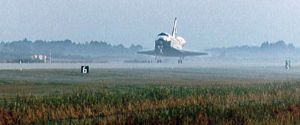 | STS-41-B Views of the Challenger landing at Kennedy to end shuttle mission 41-B Credit: NASA |
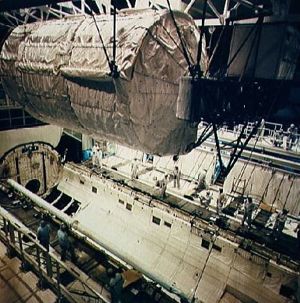 | STS-51-B Spacelab D-1 being installed in the Challenger payload bay Credit: NASA |
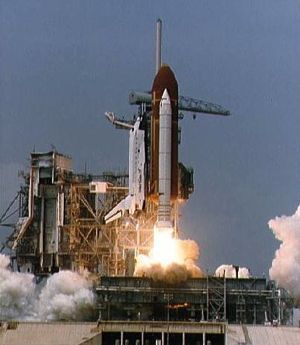 | STS-51-B Lift-off of shuttle Challenger and mission STS 51-B Credit: NASA |
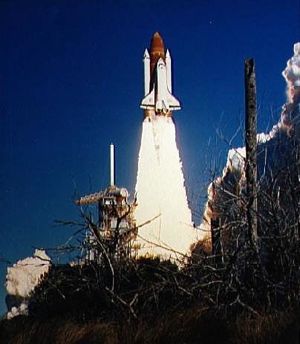 | STS-51-L Lift-off of the Shuttle Challenger for STS 51-L mission Credit: NASA |
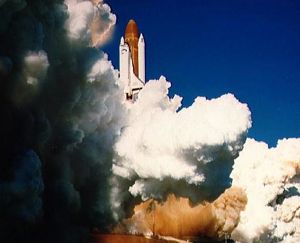 | STS-51-L Lift-off of the Shuttle Challenger for STS 51-L mission Credit: NASA |
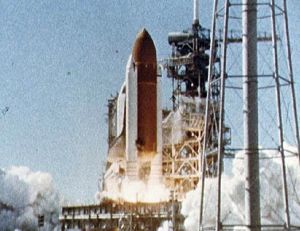 | STS-51-L Signs of black smoke during Lift-off of the Shuttle Challenger STS 51-L Credit: NASA |
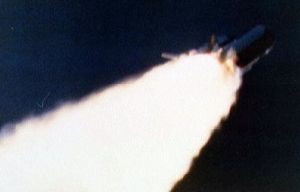 | STS-51-L View of the SRB problems with Challenger after launch Credit: NASA |
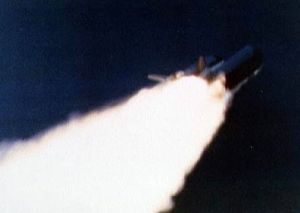 | STS-51-L View of the SRB problems with Challenger after launch Credit: NASA |
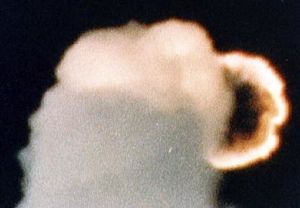 | STS-51-L Challenger SRB destruction after launch Credit: NASA |
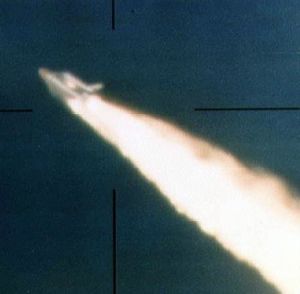 | STS-51-L View of the SRB problems with Challenger after launch Credit: NASA |
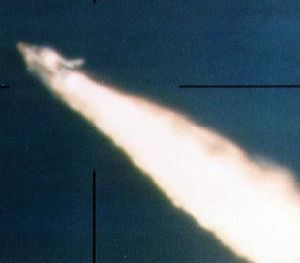 | STS-51-L View of the SRB problems with Challenger after launch Credit: NASA |
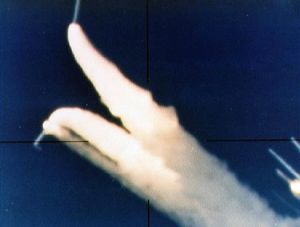 | STS-51-L View of the SRB problems with Challenger after launch Credit: NASA |
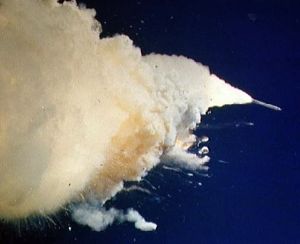 | STS-51-L Challenger accident after launch Credit: NASA |
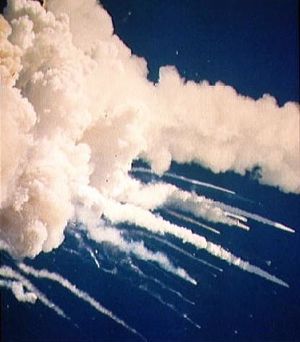 | STS-51-L Challenger accident after launch Credit: NASA |
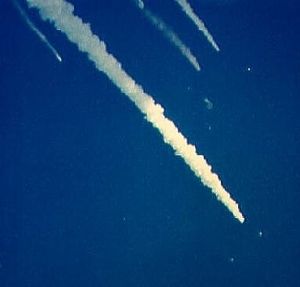 | STS-51-L Challenger accident after launch Credit: NASA |
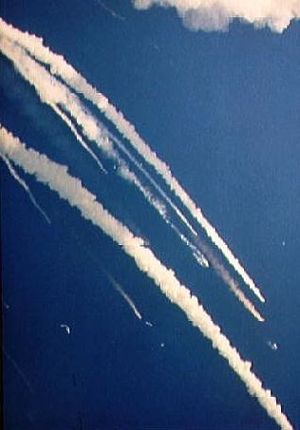 | STS-51-L Challenger accident after launch Credit: NASA |
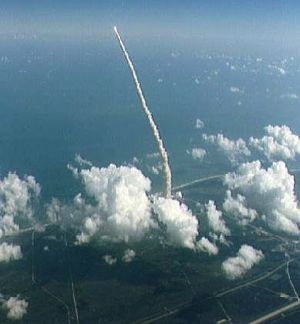 | STS-61-A Launch of the shuttle Challenger and beginning of STS 61-A mission Credit: NASA |
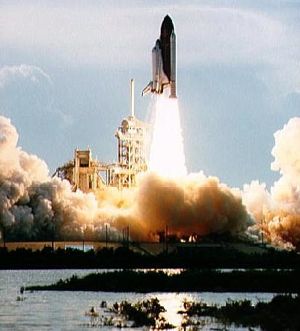 | STS-51-F Launch of the STS 51-F Challenger Credit: NASA |
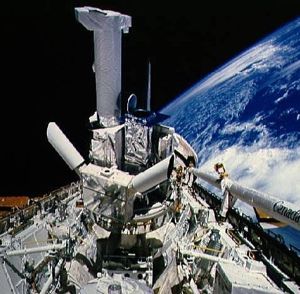 | STS-51-F View of the Challenger's payload bay and the SOUP experiment Credit: NASA |
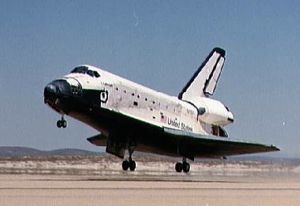 | STS-51-F Landing of the Shuttle Challenger at Edwards AFB and end of STS 51-F mission Credit: NASA |
1978 February 10 - .
- Complete final assembly, STA-099, Palmdale - . Nation: USA. Program: STS. Class: Manned. Type: Manned spaceplane. Spacecraft Bus: Shuttle. Spacecraft: Challenger.
1978 February 14 - .
- STA-099 on dock, Lockheed facility, Palmdale - . Nation: USA. Program: STS. Class: Manned. Type: Manned spaceplane. Spacecraft Bus: Shuttle. Spacecraft: Challenger.
1979 June 21 - .
- Start assembly crew module, Challenger (OV-099) - . Nation: USA. Program: STS. Class: Manned. Type: Manned spaceplane. Spacecraft Bus: Shuttle. Spacecraft: Challenger.
1979 August 6 - .
- Complete limit test (STA-099) - . Nation: USA. Program: STS. Class: Manned. Type: Manned spaceplane. Spacecraft Bus: Shuttle. Spacecraft: Challenger. Complete limit test (STA-099), Lockheed facility, Palmdale.
1983 April 4 - . 18:30 GMT - . Launch Site: Cape Canaveral. Launch Complex: Cape Canaveral LC39A. Launch Platform: MLP2. LV Family: Shuttle. Launch Vehicle: Space Shuttle.
- STS-6 - .
Call Sign: Challenger. Crew: Bobko,
Musgrave,
Peterson,
Weitz.
Payload: Challenger F01 / TDRS 1 [IUS]. Mass: 21,305 kg (46,969 lb). Nation: USA.
Related Persons: Bobko,
Musgrave,
Peterson,
Weitz.
Agency: NASA Houston.
Program: STS.
Class: Manned.
Type: Manned spaceplane. Flight: STS-6.
Spacecraft Bus: Shuttle.
Spacecraft: Challenger.
Duration: 5.02 days. Decay Date: 1983-04-09 . USAF Sat Cat: 13968 . COSPAR: 1983-026A. Apogee: 295 km (183 mi). Perigee: 288 km (178 mi). Inclination: 28.50 deg. Period: 90.40 min.
Manned four crew. First flight of space shuttle Challenger; deployed TDRSS. Payloads: Deployment of Tracking and Data Relay Satellite (TDRS)-A with Inertial Upper Stage (lUS)-2, Continuous Flow Electrophoresis System (CFES), Monodisperse Latex Reactor (MLR), Night/Day Optical Survey of Lightning (NOSL) experiment, three getaway specials (GAS).
1983 April 8 - . 21:05 GMT - .
- EVA STS-6-1 - . Crew: Musgrave, Peterson. EVA Duration: 0.17 days. Nation: USA. Related Persons: Musgrave, Peterson. Program: STS. Class: Manned. Type: Manned spaceplane. Flight: STS-6. Spacecraft Bus: Shuttle. Spacecraft: Challenger. Tested EMU Manoeuvring Unit. Tested EVA emergency procedures..
1983 June 18 - . 11:33 GMT - . Launch Site: Cape Canaveral. Launch Complex: Cape Canaveral LC39A. Launch Platform: MLP1. LV Family: Shuttle. Launch Vehicle: Space Shuttle.
- STS-7 - .
Call Sign: Challenger. Crew: Crippen,
Fabian,
Hauck,
Ride,
Thagard.
Payload: Challenger F02 / OSTA-2. Mass: 16,839 kg (37,123 lb). Nation: USA.
Related Persons: Crippen,
Fabian,
Hauck,
Ride,
Thagard.
Agency: NASA Houston.
Program: STS.
Class: Manned.
Type: Manned spaceplane. Flight: STS-7.
Spacecraft Bus: Shuttle.
Spacecraft: Challenger.
Duration: 6.10 days. Decay Date: 1983-06-24 . USAF Sat Cat: 14132 . COSPAR: 1983-059A. Apogee: 307 km (190 mi). Perigee: 299 km (185 mi). Inclination: 28.30 deg. Period: 90.60 min.
Manned five crew. Deployed Anik C2, Palapa B1; deployed and retrieved SPAS platform. Payloads: Office of Space and Terrestrial Applications (OSTA)-2 experiments, deployment of PALAPA-B1 communications satellite for Indonesia with Payload Assist Module (PAM)-D and Telesat-F communications satellite for Canada with PAM-D, German Shuttle Pallet Satellite (SPAS)-01, seven getaway specials (GAS), Monodisperse Latex Reactor (MLR), Continuous Flow Electrophoresis System (CFES).
1983 August 30 - . 06:32 GMT - . Launch Site: Cape Canaveral. Launch Complex: Cape Canaveral LC39A. Launch Platform: MLP2. LV Family: Shuttle. Launch Vehicle: Space Shuttle.
- STS-8 - .
Call Sign: Challenger. Crew: Bluford,
Brandenstein,
Gardner,
Thornton, Bill,
Truly.
Payload: Challenger F03 / PFTA. Mass: 13,642 kg (30,075 lb). Nation: USA.
Related Persons: Bluford,
Brandenstein,
Gardner,
Thornton, Bill,
Truly.
Agency: NASA Houston.
Program: STS.
Class: Manned.
Type: Manned spaceplane. Flight: STS-8.
Spacecraft Bus: Shuttle.
Spacecraft: Challenger.
Duration: 6.05 days. Decay Date: 1983-09-05 . USAF Sat Cat: 14312 . COSPAR: 1983-089A. Apogee: 313 km (194 mi). Perigee: 306 km (190 mi). Inclination: 28.50 deg. Period: 90.70 min.
First night launch and night landing. Deployed Insat 1B. Payloads: Deployment of INSAT (lndia communica-tion satellite) with Payload Assist Module (PAM)-D, Payload Flight Test Article (PFTA)/ Payload Deployment Retrieval System (PDRS), Continuous Flow Electrophoresis (CFES), biomedical experiments. 250,000 express mail envelopes with special cachet for U.S. Postal Service were carried for a first-day cover.
1984 February 3 - . 13:00 GMT - . Launch Site: Cape Canaveral. Launch Complex: Cape Canaveral LC39A. Launch Platform: MLP2. LV Family: Shuttle. Launch Vehicle: Space Shuttle.
- STS-41-B - .
Call Sign: Challenger. Crew: Brand,
Gibson,
McCandless,
McNair,
Stewart.
Payload: Challenger F04 / SPAS 1A. Mass: 15,362 kg (33,867 lb). Nation: USA.
Related Persons: Brand,
Gibson,
McCandless,
McNair,
Stewart.
Agency: NASA Houston.
Program: STS.
Class: Manned.
Type: Manned spaceplane. Flight: STS-41-B.
Spacecraft Bus: Shuttle.
Spacecraft: Challenger.
Duration: 7.97 days. Decay Date: 1984-02-11 . USAF Sat Cat: 14681 . COSPAR: 1984-011A. Apogee: 316 km (196 mi). Perigee: 307 km (190 mi). Inclination: 28.50 deg. Period: 90.80 min.
Manned five crew. Deployed Westar 6, Palapa B2; tested Manned Maneuvering Unit (MMU). Payloads: PALAPA-B2 (Indonesian communications satellite) with Payload Assist Module (PAM)-D and WESTAR (Western Union communications satellite)-Vl with PAM-D. Both satellites were deployed but the PAM-D in each satellite failed to ignite, leaving both satellites in earth orbit. Both satellites were retrieved and returned to earth for renovation on the STS-51-A mission. The manned maneuvering unit (MMU) was tested with extravehicular astronauts as free flyers without tethers as far as 98 m from the orbiter. Shuttle Pallet Satellite (SPAS)-01 experiments, Monodisperse Latex Reactor (MLR), Isoelectric Focusing Experiment (lEF), Acoustic Containerless Experiment System (ACES), Cinema 360 cameras, five getaway specials (GAS), Aerodynamic Coefficient Identification (ACIP)/High Resolution Accelerom-eter Package (HIRAP).
1984 February 7 - .
- EVA STS-10-1 - . Crew: McCandless, Stewart. EVA Duration: 0.23 days. Nation: USA. Related Persons: McCandless, Stewart. Program: STS. Class: Manned. Type: Manned spaceplane. Flight: STS-10. Spacecraft Bus: Shuttle. Spacecraft: Challenger. Tested MMU manoeuvring unit in free flight..
1984 February 9 - .
- EVA STS-10-2 - . Crew: McCandless, Stewart. EVA Duration: 0.25 days. Nation: USA. Related Persons: McCandless, Stewart. Program: STS. Class: Manned. Type: Manned spaceplane. Flight: STS-10. Spacecraft Bus: Shuttle. Spacecraft: Challenger. Tested MMU manoeuvring unit in free flight..
1984 April 6 - . 13:58 GMT - . Launch Site: Cape Canaveral. Launch Complex: Cape Canaveral LC39A. Launch Platform: MLP1. LV Family: Shuttle. Launch Vehicle: Space Shuttle.
- STS-41-C - .
Call Sign: Challenger. Crew: Crippen,
Hart,
Nelson,
Scobee,
van Hoften.
Payload: Challenger F05 / LDEF 1 / MMU 3. Mass: 17,357 kg (38,265 lb). Nation: USA.
Related Persons: Crippen,
Hart,
Nelson,
Scobee,
van Hoften.
Agency: NASA Houston.
Program: STS.
Class: Manned.
Type: Manned spaceplane. Flight: STS-41-C.
Spacecraft Bus: Shuttle.
Spacecraft: Challenger.
Duration: 6.99 days. Decay Date: 1984-04-13 . USAF Sat Cat: 14897 . COSPAR: 1984-034A. Apogee: 468 km (290 mi). Perigee: 222 km (137 mi). Inclination: 28.50 deg. Period: 91.40 min.
Manned five crew. First repair on orbit of a satellite, Solar Maximum Mission, by James van Hoften and George Nelson. Deployed LDEF. Payloads:Solar Maximum Mission (SMM) repair, manned maneuvering unit (MMU) satellite support, deployment of Long-Duration Exposure Facility (LDEF) in earth orbit free drift. LDEF contained 57 experiments and weighed about 10,000 kg. Cinema 360 and IMAX 70-mm cameras.
1984 April 8 - . 14:18 GMT - .
- EVA STS-41-C-1 - . Crew: Nelson, van Hoften. EVA Duration: 0.12 days. Nation: USA. Related Persons: Nelson, van Hoften. Program: STS. Class: Manned. Type: Manned spaceplane. Flight: STS-41-C. Spacecraft Bus: Shuttle. Spacecraft: Challenger. Attempted capture of Solar Max satellite..
1984 April 11 - . 08:58 GMT - .
- EVA STS-41-C-2 - . Crew: Nelson, van Hoften. EVA Duration: 0.30 days. Nation: USA. Related Persons: Nelson, van Hoften. Program: STS. Class: Manned. Type: Manned spaceplane. Flight: STS-41-C. Spacecraft Bus: Shuttle. Spacecraft: Challenger. Successfully captured and repaired Solar Max satellite..
1984 July - .
- STS-41-E (cancelled) - . Crew: Buchli, Detroye, Mattingly, Onizuka, Shriver. Backup Crew: Sundberg. Support Crew: Watterson. Payload: DoD Mission. Nation: USA. Program: STS. Flight: STS-41-E. Spacecraft Bus: Shuttle. Spacecraft: Challenger. Planned Department of Defense shuttle mission. Cancelled due to IUS failure..
1984 October 5 - . 11:03 GMT - . Launch Site: Cape Canaveral. Launch Complex: Cape Canaveral LC39A. Launch Platform: MLP1. LV Family: Shuttle. Launch Vehicle: Space Shuttle.
- STS-41-G - .
Call Sign: Challenger. Crew: Crippen,
Garneau,
Leestma,
McBride,
Ride,
Scully-Power,
Sullivan.
Payload: Challenger F06 / ERBS / LFC / ORS. Mass: 10,643 kg (23,463 lb). Nation: USA.
Related Persons: Crippen,
Garneau,
Leestma,
McBride,
Ride,
Scully-Power,
Sullivan.
Agency: NASA Houston.
Program: STS.
Class: Manned.
Type: Manned spaceplane. Flight: STS-41-G.
Spacecraft Bus: Shuttle.
Spacecraft: Challenger.
Duration: 8.22 days. Decay Date: 1984-10-13 . USAF Sat Cat: 15353 . COSPAR: 1984-108A. Apogee: 390 km (240 mi). Perigee: 350 km (210 mi). Inclination: 51.70 deg. Period: 92.00 min.
Manned seven crew. Deployed ERBS; performed high resolution Earth imagery. Payloads: Earth Radiation Budget Satellite (ERBS) deployment, Office of Space and Terrestrial Applications (OSTA)-3 experiments, Large Format Camera (LFC). First use of Orbital Refueling System (ORS) with extravehicular activity (EVA) astronauts, IMAX camera.
1984 October 11 - .
- EVA STS-41-G-1 - . Crew: Leestma, Sullivan. EVA Duration: 0.15 days. Nation: USA. Related Persons: Leestma, Sullivan. Program: STS. Class: Manned. Type: Manned spaceplane. Flight: STS-41-G. Spacecraft Bus: Shuttle. Spacecraft: Challenger. Simulated refuelling of satellite..
1985 March - .
- STS-51-E (cancelled) - . Crew: Baudry, Bobko, Garn, Griggs, Hoffman, Seddon, Williams, Donald. Payload: TDRS/IUS. Nation: USA. Related Persons: Baudry, Bobko, Garn, Griggs, Hoffman, Seddon, Williams, Donald. Program: STS. Flight: STS-51-E. Spacecraft Bus: Shuttle. Spacecraft: Challenger. Planned TDRS/IUS deployment shuttle mission. Cancelled due to IUS failure..
1985 April 29 - . 16:02 GMT - . Launch Site: Cape Canaveral. Launch Complex: Cape Canaveral LC39A. Launch Platform: MLP2. LV Family: Shuttle. Launch Vehicle: Space Shuttle.
- STS-51-B - .
Call Sign: Challenger. Crew: Gregory,
Lind,
Overmyer,
Thagard,
Thornton, Bill,
van den Berg, Lodewijk,
Wang.
Payload: Challenger F07 / SL 3 MPESS. Mass: 14,245 kg (31,404 lb). Nation: USA.
Related Persons: Gregory,
Lind,
Overmyer,
Thagard,
Thornton, Bill,
van den Berg, Lodewijk,
Wang.
Agency: NASA Houston.
Program: STS.
Class: Manned.
Type: Manned spaceplane. Flight: STS-51-B.
Spacecraft Bus: Shuttle.
Spacecraft: Challenger.
Duration: 7.01 days. Decay Date: 1985-05-06 . USAF Sat Cat: 15665 . COSPAR: 1985-034A. Apogee: 353 km (219 mi). Perigee: 346 km (214 mi). Inclination: 57.00 deg. Period: 91.50 min.
Manned seven crew. Deployed Nusat; carried Spacelab 3. Payloads: Spacelab-3 experiments, habitable Spacelab and mission peculiar experiment support structure. The experiments represented a total of five different disciplines: materials processing in space, environmental observa-tions, life science, astrophysics, and technology experiments. Two getaway specials (GAS). The flight crew was split into gold and silver shifts working 12-hour days during the flight.
1985 July - .
- STS-51-DA (cancelled) - . Crew: Cleave, O Connor, Shaw, Spring. Payload: TDRS/IUS. Nation: USA. Related Persons: Cleave, O Connor, Shaw, Spring. Program: STS. Flight: STS-51-DA. Spacecraft Bus: Shuttle. Spacecraft: Challenger. Planned TDRS/IUS deployment shuttle mission. Cancelled due to IUS failure..
1985 July 12 - . Launch Site: Cape Canaveral. Launch Complex: Cape Canaveral LC39A. LV Family: Shuttle. Launch Vehicle: Space Shuttle.
- Shuttle Challenger Pad Abort - . Nation: USA. Program: STS. Flight: STS-51-F. Spacecraft Bus: Shuttle. Spacecraft: Challenger. The countdown for Challenger's launch was halted at T-3 seconds when on-board computers detected a problem with a coolant valve on main engine #2. The valve was replaced and Challenger was launched on July 29, 1985..
1985 July 29 - . 21:00 GMT - . Launch Site: Cape Canaveral. Launch Complex: Cape Canaveral LC39A. Launch Platform: MLP2. LV Family: Shuttle. Launch Vehicle: Space Shuttle.
- STS-51-F - .
Call Sign: Challenger. Crew: Acton,
Bartoe,
Bridges,
England,
Fullerton,
Henize,
Musgrave.
Payload: Challenger F08 / PDP / Spacelab 2 PLT. Mass: 15,603 kg (34,398 lb). Nation: USA.
Related Persons: Acton,
Bartoe,
Bridges,
England,
Fullerton,
Henize,
Musgrave.
Agency: NASA Houston.
Program: STS.
Class: Manned.
Type: Manned spaceplane. Flight: STS-51-F.
Spacecraft Bus: Shuttle.
Spacecraft: Challenger.
Duration: 7.95 days. Decay Date: 1985-08-06 . USAF Sat Cat: 15925 . COSPAR: 1985-063A. Apogee: 337 km (209 mi). Perigee: 203 km (126 mi). Inclination: 49.50 deg. Period: 89.90 min.
Manned seven crew. At 5 minutes, 45 seconds into ascent the number one engine shut down prematurely due to a a sensor problem and an abort to orbit was declared. Despite the anomaly the mission continued. Launched PDP; carried Spacelab 2. Payloads: Spacelab-2 with 13 experiments, Shuttle Amateur Radio Experiment (SAREX), Protein Crystal Growth (PCG). The flight crew was divided into a red and blue team. Each team worked 12-hour shifts for 24-hour-a-day operation.
1985 October 30 - . 17:00 GMT - . Launch Site: Cape Canaveral. Launch Complex: Cape Canaveral LC39A. Launch Platform: MLP1. LV Family: Shuttle. Launch Vehicle: Space Shuttle.
- STS-61-A - .
Call Sign: Challenger. Crew: Bluford,
Buchli,
Dunbar,
Furrer,
Hartsfield,
Messerschmid,
Nagel,
Ockels.
Payload: Challenger F09 / GLOMR 1. Mass: 14,451 kg (31,859 lb). Nation: USA.
Related Persons: Bluford,
Buchli,
Dunbar,
Furrer,
Hartsfield,
Messerschmid,
Nagel,
Ockels.
Agency: NASA Houston.
Program: STS.
Class: Manned.
Type: Manned spaceplane. Flight: STS-61-A.
Spacecraft Bus: Shuttle.
Spacecraft: Challenger.
Duration: 7.03 days. Decay Date: 1985-11-06 . USAF Sat Cat: 16230 . COSPAR: 1985-104A. Apogee: 331 km (205 mi). Perigee: 319 km (198 mi). Inclination: 57.00 deg. Period: 91.00 min.
Manned eight crew. Launched GLOMR; carried Spacelab D1. Payloads: Spacelab D-1 with habitable module and 76 experiments. Six of the eight crew members were divided into a blue and red team working 12-hour shifts for 24-hour-a-day operation. The remaining two crew members were 'switch hitters.'.
1986 January 28 - . 16:38 GMT - . Launch Site: Cape Canaveral. Launch Complex: Cape Canaveral LC39B. Launch Platform: MLP2. LV Family: Shuttle. Launch Vehicle: Space Shuttle. FAILURE: Seal on SRB failed, allowed hot gas to burn through External Tank.. Failed Stage: 0.
- STS-51-L - . Call Sign: Challenger. Crew: Jarvis, McAuliffe, McNair, Onizuka, Resnik, Scobee, Smith. Payload: Challenger F10 / TDRS 2 [IUS]. Mass: 116,670 kg (257,210 lb). Nation: USA. Related Persons: Jarvis, McAuliffe, McNair, Onizuka, Resnik, Scobee, Smith. Agency: NASA. Program: STS. Class: Manned. Type: Manned spaceplane. Flight: STS-51-L. Spacecraft Bus: Shuttle. Spacecraft: Challenger. Duration: 0.0008 days. Decay Date: 1986-01-28 . Apogee: 15 km (9 mi). Exploded 73 seconds after launch, all 7 crewmembers were killed; carried TDRSS satellite..
1986 May - .
- STS-61-F (cancelled) - . Crew: Bridges, Hauck, Hilmers, Lounge. Payload: Ulysses. Nation: USA. Related Persons: Bridges, Hauck, Hilmers, Lounge. Program: STS. Flight: STS-61-F. Spacecraft Bus: Shuttle. Spacecraft: Challenger. Planned shuttle mission for deployment of Ulysses spacecraft. Cancelled after Challenger disaster. .
1986 July - .
- STS-61-M (cancelled) - . Crew: Fisher, William, Lee, O Connor, Ride, Shriver, Wood, Robert. Backup Crew: Walker. Payload: TDRS/IUS. Nation: USA. Program: STS. Flight: STS-61-M. Spacecraft Bus: Shuttle. Spacecraft: Challenger. Planned TDRS/IUS deployment shuttle mission. Cancelled after Challenger disaster. .
1986 September - .
- STS-61-I (cancelled) - . Crew: Bagian, Bhat, Carter, Dunbar, Smith, Williams, Donald. Backup Crew: Nair. Payload: LDEF(Recovery). Nation: USA. Program: STS. Flight: STS-61-I. Spacecraft Bus: Shuttle. Spacecraft: Challenger. Planned shuttle LDEF (Long Duration Exposure Facility) recovery mission. Cancelled after Challenger disaster. .
1986 December - .
- STS-71-B (cancelled) - . Crew: Jones, Charles. Nation: USA. Related Persons: Jones, Charles. Program: STS. Flight: STS-71-B. Spacecraft Bus: Shuttle. Spacecraft: Challenger. Planned shuttle mission. Cancelled after Challenger disaster. .
1987 March - .
- STS-71-E (cancelled) - . Crew: Gaffney, Phillips. Backup Crew: Hughes-Fulford. Payload: SLS-1. Nation: USA. Program: STS. Flight: STS-71-E. Spacecraft Bus: Shuttle. Spacecraft: Challenger. Planned SLS-1 shuttle mission. Cancelled after Challenger disaster. .
1988 February - .
- STS-81-G (cancelled) - . Crew: Mohri, Mukai. Backup Crew: Doi. Payload: Spacelab-J. Nation: USA. Program: STS. Flight: STS-81-G. Spacecraft Bus: Shuttle. Spacecraft: Challenger. Planned Spacelab-J shuttle mission. Cancelled after Challenger disaster. .
1988 September 1 - . LV Family: Shuttle. Launch Vehicle: Space Shuttle.
- STS-51-K (cancelled) - . Payload: Spacelab-D1 . Nation: USA. Program: STS. Flight: STS-51-K. Spacecraft Bus: Shuttle. Spacecraft: Challenger. Planned Spacelab-D1 shuttle mission. Cancelled after Challenger disaster. No crew selected; renamed STS-61A.
Back to top of page
Home - Search - Browse - Alphabetic Index: 0- 1- 2- 3- 4- 5- 6- 7- 8- 9
A- B- C- D- E- F- G- H- I- J- K- L- M- N- O- P- Q- R- S- T- U- V- W- X- Y- Z
© 1997-2019 Mark Wade - Contact
© / Conditions for Use